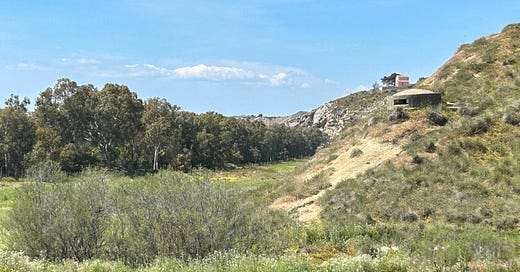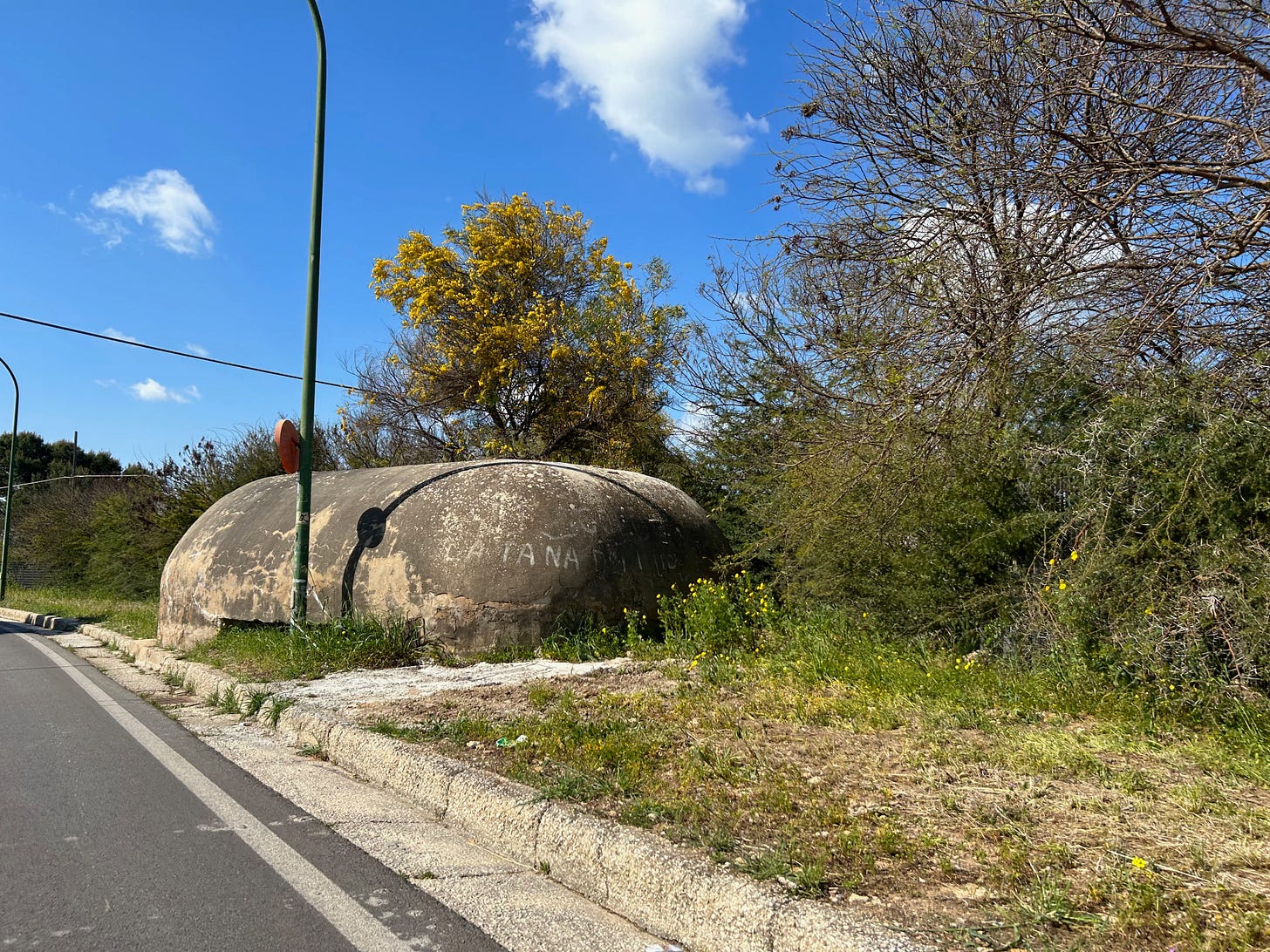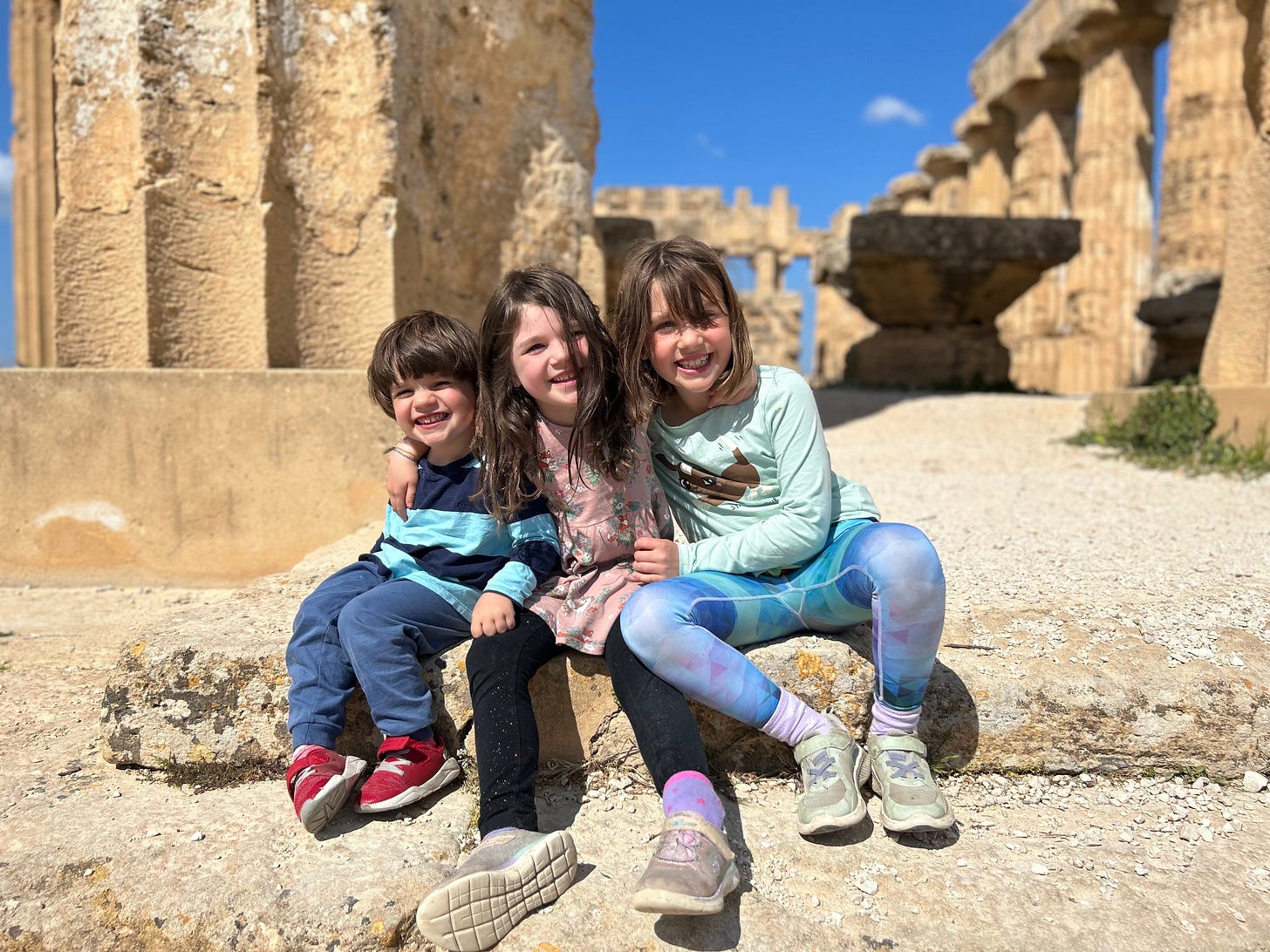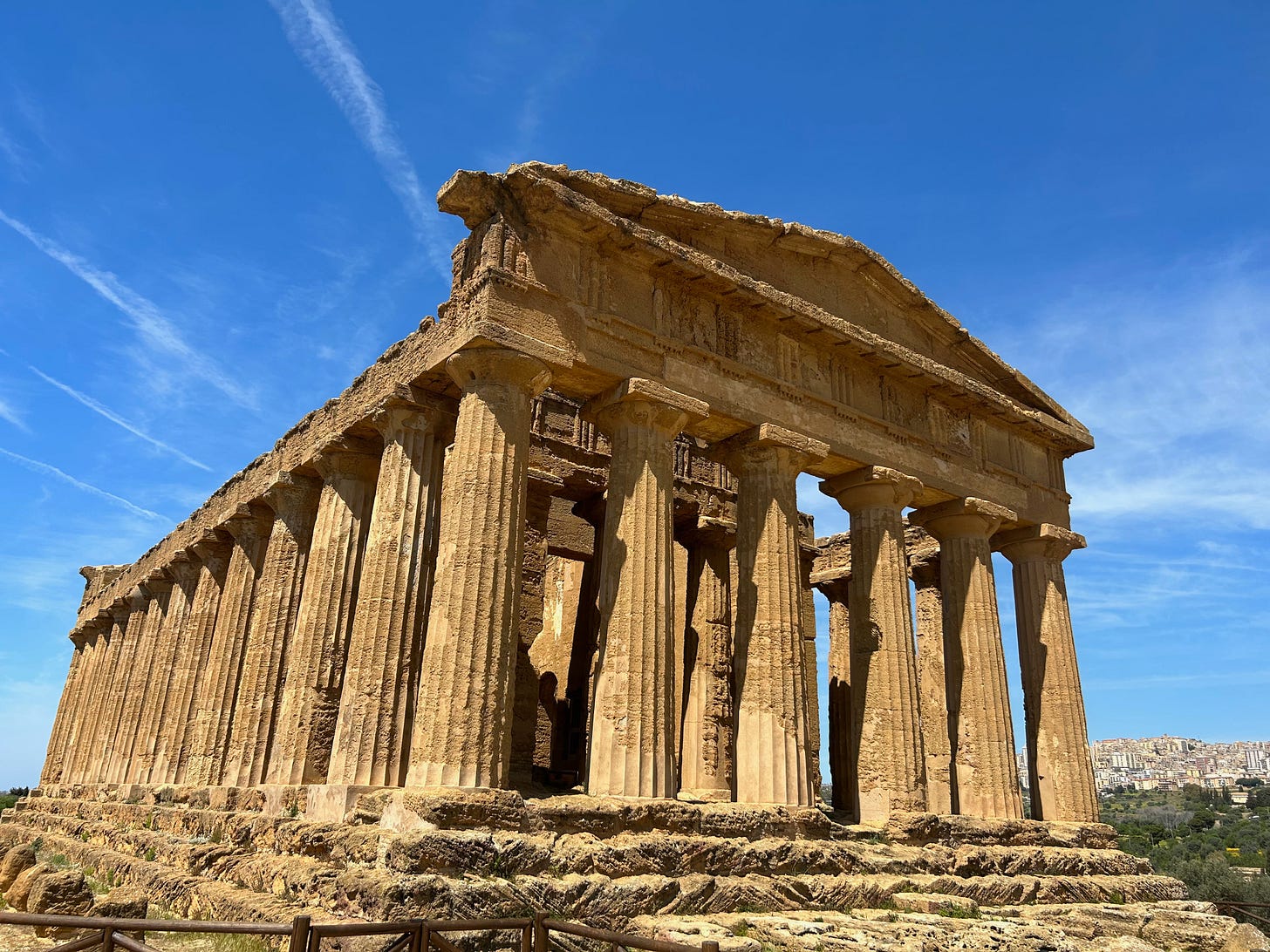The last two weeks, the kids have been on spring break (hence the lack of posting), and we drove from Florence to Naples, then took the ferry to Sicily. It was a lovely trip, filled with a lot of ancient Roman and Greek ruins.
During the trip, I was hoping to find the locations Opapa landed in Italy, and to trace his movements up the Italian peninsula during World War II. This objective, it turns out, was far more difficult than exploring temples from 600 BCE. Despite the fact that World War II holds an outsized place in history books and in the popular imagination, tourism in Italy — I suppose not surprisingly — is not geared toward World War II.
In fact, when I looked into whether there was some a museum about WWII and the Italian resistance in Naples, there was next to nothing. The one exception is the Napoli Sotteraneo, a tour of Underground Naples that includes both the Greek and Roman history of the cisterns, tunnels, and catacombs beneath Naples, and information on how the tunnels were used by the Italian Resistance during World War II.
By the time we got to Sicily, I had pretty much given up on finding formal World War II-related museums. Instead, we focused on the ancient sites: Sicily has a fascinating history, and has incredible remains of the Greek, Carthaginian (North African), Roman, and Norman colonies that populated the small island.
So it was by chance, as we drove up and down the southern coast of Sicily, that we began noticing World War II bunkers: dozens of them. Some were right on the side of the road; others were next to or part of ancient sites, such as a small bunker next to the ancient Greek theater in Eraclea Minoa.
This one sits on a hill less than a mile from a beautiful beach, known as Torre Salsa, where we spent a day playing an looking for seashells:
This one was on the road to Selinunte, a marvellous Greek site overlooking the sea:
I thought a lot about the juxtaposition between these concrete bunkers, which exist without memorialization or descriptive paneling, and the highly organized tours, archaeological labor, and restoration work that has focused on the ancient sites. Below, for example, are photos I took less than a mile from the bunker shown above:
The co-existence of these ancient sites with the World War II bunkers are fascinating to me for multiple reasons: first, I wonder what the Allied forces, landing on the beaches of Sicily, thought about these stunning ruins. Did they notice them? Did they think about them? What about the Italian and German soldiers who were manning the bunkers? They were, in some cases, a stones’ throw from an ancient Greek temple. What did that mean to them?
Second, I marvel at the changing nature of what kinds of history matter. One of the most interesting (and demoralizing) parts of visiting ancient Greek and Roman sites is learning about how many of these structures were intentionally destroyed by Christians hundreds of years later, after they were deemed to be pagan and therefore worthy of destruction. Many of these structures would still be standing if it weren’t for the very deliberate, and difficult, effort made to dismantle them. The ones that survive — like this temple near Agrigento in southern Sicily, were consecrated as Christian churches and therefore eluded demolition.
A third train of thought is about the historical bias toward stone and concrete. Many of the sites we visited had temples made of wood before the stone temples were constructed. Of course, nothing remains of the wooden structures. Every building material has its own life-span, and the choice of material has a tremendous effect on what we know about the past, and especially which ancient civilizations we consider to be important.
It is interesting that bunkers — ugly concrete structures — are the most enduring physical remnant of World War II in Sicily. What will future generations make of them, if anything? Will their material presence affect the historical memory of World War II? Or will they continue to dot the landscape with little mention?
I don’t have answers to these questions, but I find them useful for thinking about how our historical knowledge is so fundamentally dependent on biological realities such as the relative time it takes different materials to degrade. The materials that do survive are then subject to shifting human ideas about what histories are important enough for preservation — or intentional destruction.








